Key (online version)
|
|
1a |
| Crossvein M-M present [Fig. 408]; dc 0+1. |
| Sigaloessinae |
|
2 |
| b |
| Crossvein M-M absent [Fig. 436]; dc 0+2 or 1+2. |
| Asteiinae |
|
18 |
| |
|
2a |
| Arista lacking [Fig. 443] or only basal aristomere present [Fig. 440]. No fronto-orbital and ocellar setae. Vein R2+3 very short, terminating in R1 [Fig. 441] or in costa. First flagellomere enlarged. |
|
3 |
| b |
| Arista well-developed. Fronto-orbital and ocellar setae present. Vein R2+3 various, short or long. First flagellomere mostly normal. |
|
4 |
| |
|
3a |
Arista with long hairs, first flagellomere with long hairs but only with basal aristomere [Fig. 440]. Ocellar seta weak but present. Pedicel with long dorsal seta. Two rows each of acrostichal and intra-alar microchaetae. Vein R2+3 very short, terminating in R1, discal cell short [Fig. 441]. Wing comparatively broader, length/width ratio slightly less than 2.5.
Four species in Africa |
| Anarista Papp, 1972 |
|
|
| b |
Arista lacking, first flagellomere with short hairs but with 5 long setae, longer than first flagellomere [Fig. 443]. Not only fronto-orbitals, but also ocellar seta lacking. Pedicel without long dorsal seta. No acrostichal or intra-alar microchaetae. Vein R2+3 slightly longer, terminating in costal vein, discal cell long, inter-crossvein section of M1+2 more than 4 times as long as M-M crossvein [Fig. 442]. Wing comparatively slender, length/with ratio is slightly more than 3.
One species from Thailand |
| Polyarista Papp, 2013 |
|
|
| |
|
4a |
| Vein R2+3 long, ending in costal vein well beyond R1 [Fig. 408]. Anepisternum with numerous fine setulae. One pair of proclinate fronto-orbitals present. |
| Leiomyza Macquart, 1835 |
|
5 |
| b |
| Vein R2+3 short, ending in costal vein at or slightly beyond R1, i.e. second costal section as long as R-M crossvein or even shorter [Fig. 439]. Anepisternum bare or with numerous fine setulae. |
|
12 |
| |
|
5a |
| Knob of halter clear yellow. |
|
6 |
| b |
|
8 |
| |
|
6a |
| Dorsocentral setae in a more posterior position, placement just anterior of level of postalar setae. Frons dull to subshining, finely pollinose up to ocellar triangle and upper orbits, black to dark brown on ocellar triangle and orbital plates, remainder yellow to pale brown. [Nearctic, West-Palaearctic] |
| Leiomyza curvinervis (Zetterstedt, 1838) |
|
|
| b |
| Dorsocentral setae in a more anterior position, placement just posterior of level of notopleural setae. Frons shining, black to dark brown with paler anterior margin. |
|
7 |
| |
|
7a |
| Surstylus and epandrial process closely approximated, separated by less than the width of the epandrial process. Slightly clavate tip to epandrial process bent inward. Apical setae of surstylus set at an angle to surstylus pointing inward [Fig. 451]. [Nearctic, West-Palaearctic] |
| Leiomyza scathophagina (Fallén, 1823) |
|
|
| b |
| Surstylus and epandrial process well separated by more than the width of the epandrialprocess; slightly clavate tip to epandrial process straight; apical setae of surstylus in line with surstylus [Fig. 452]. [Mongolia] |
| Leiomyza kaszabi Papp, 1972 |
|
|
| |
|
8a |
| Dc placed more posteriorly, removed from the scutellum by much less than their length. |
|
9 |
| b |
| Dc placed more anteriorly, removed from the scutellum by about their length [Fig. 248]. |
|
11 |
| |
|
9a |
| In dorsal view surstyli swollen apically and abruptly bent inward [Fig. 447]. [Nearctic, West-Palaearctic] |
| Leiomyza laevigata (Meigen, 1830) |
|
|
| b |
| In dorsal view surstyli tapering to a narrowly rounded tip [Fig. 445] [Fig. 448]. |
|
10 |
| |
|
10a |
| Epandrial process tapering to a rounded point, more like dudai than birkheadi. Apical setae of the surstylus relatively short and fine [Fig. 448], in lateral view surstylus with a relatively broad tip the two apical setae (sometimes a smaller third one present) with their bases clearly separated [Fig. 449]. Legs yellow, the femora more or less distinctly infuscated along their entire length, particularly the hind pair. [Nearctic] |
| Leiomyza wheeleri Sabrosky, 1956 |
|
|
| b |
| Epandrial process a little swollen apically with broadly rounded tip. Apical setae of the surstylus relatively long and strong [Fig. 445], in lateral view surstylus tapering to a narrow tip the bases of the two apical setae closely approximated [Fig. 446]. Legs yellow, at most the femora, especially the hind pair, slightly browned subapically. [West-Palaearctic] |
| Leiomyza birkheadi Gibbs in Gibbs & Papp, 2007 |
|
|
| |
|
11a |
| Inner face of surstylus with angled projection basally surmounted by a few fine setae [Fig. 453] [Fig. 457]. Ejaculatory apodeme smaller with cranial end less dilated [Fig. 455]. Apical setae of surstylus relatively shorter. Epandrial process broader, the apical digiti form process of a different form. [West-palaearctic, east beyond Ural] |
| Leiomyza dudai Sabrosky, 1957 |
|
|
| b |
| Inner face of surstylus smooth, lacking a distinct angled projection basally [Fig. 454]. Ejaculatory apodeme larger with cranial end more dilated [Fig. 456]. Apical setae of surstylus relatively longer. Epandrial process less broad, the apical digitiform process of a different form [Fig. 454]. [China] |
| Leiomyza chinensis Papp in Gibbs & Papp, 2007 |
|
|
| |
|
12a |
| Anepisternum bare. Anal cell, when tracable, never quadrate; anal vein virtually invisible [Fig. 439]. Two pairs of dorsocentral setae. |
| Astiosoma rufifrons Duda, 1927 |
|
|
| b |
| Anepisternum setose. Anal vein and anal cell faint but clearly visible as crease or fold; anal cell short and quadrate [Fig. 444]. One pair of dorsocentral setae. |
| Phlebosotera Duda, 1927 |
|
13 |
| |
|
13a |
| Mesonotum dull, heavily pollinose. |
| Phlebosotera lacteipennis Hendel, 1931 |
|
14 |
| b |
| Mesonotum shinging, at most thinly pollinose. |
|
15 |
| |
|
14a |
| Mesonotum yellowish or reddish brown with some black to dark brown markings. |
|
15 |
| b |
| Mesonotum entirely black. |
|
16 |
| |
|
15a |
| One pair of vertical setae (inner vertical setae absent). |
| Phlebosotera mollis Duda, 1927 |
|
|
| b |
| Two pairs of vertical setae. |
| Phlebosotera maeandrica Carles-Tolrá, 1998 |
|
|
| |
|
16a |
| Ocellar triangle at least yellow centrally. |
| Phlebosotera striata Hendel, 1931 |
|
|
| b |
| Ocellar triangle entirely dark. |
|
17 |
| |
|
17a |
| Mesonotum shiny though still thinly pale pollinose. |
| Phlebosotera longilineata Sabrosky, 1956 |
|
|
| b |
| Mesonotum entirely shining, without pollinosity. |
| Phlebosotera maspalomasi Frey, 1958 |
|
|
| |
|
18a |
| Arista absent. |
| Subanarista mahunkai (Papp, 1979) |
|
|
| b |
| Arista present. |
| Asteia Meigen, 1830 |
|
19 |
| |
|
19a |
| Hind tibia with two dark rings. |
|
20 |
| b |
| Hind tibia entirely pale. |
|
23 |
| |
|
20a |
Face with a white crossband that is bordered dark brown to black dorsally and ventrally.
Described from the Cape Province and Mozambique, but a specimen from Morocco seems te belong to this species. The arista is almost imperceptably haired (rays thin and about as long as diameter of arista), but arista not straight as it is in A. caesia. It could easily be mistaken for A. amoena or algeriensis exept for the banded hind tibia and almost bare arista. |
| Asteia ramusculata Sabrosky, 1956 |
|
|
| b |
| Face without white crossband. |
|
21 |
| |
|
21a |
| Arista bare, straight. R1 strongly curved towards C [Fig. 815]. |
| Asteia caesia Lyneborg, 1969 |
|
|
| b |
| Arista distinctly zig-zag. R1 more gently towards C [Fig. 816]. |
|
22 |
| |
|
22a |
| Antenna with first flagellomere blackish dorsally. Pleura almost entirely yellowish brown. |
| Asteia inanis Lyneborg, 1969 |
|
|
| b |
| Antenna with first flagellomere entirely brownish. Pleura with pattern of darker and paler areas. |
| Asteia floricola Papp, 1979 |
|
|
| |
|
23a |
| Head flattened at least to some extent, eyes clearly longer than high. |
|
24 |
| b |
| Head more or less globose, longest axis of eye not nearly horizontal. |
|
26 |
| |
|
24a |
| Head at least twice as long as high. |
| Asteia tunisica Papp, 1979 |
|
|
| b |
| Head no more than twice as long as high. |
|
25 |
| |
|
25a |
| Antennae with first flagellomere darkened and rather triangular. |
| Asteia ibizana (Enderlein, 1935) |
|
|
| b |
| Antennae with first flagellomere yellowish and rounded. |
| Asteia dimorphica Carles-Tolrá, 2011 |
|
|
| |
|
26a |
| Mesonotum yellow with four brown stripes on anterior part. ending short before posterior dc; outer one interrupted by suture and laterally expanded before it; a narrow, lateral presutural strip extends along the lower margin of the humerus and notopleural area but pleura and scutellum are entirely yellow [Fig. 450]. |
| Asteia elegantula Zetterstedt |
|
|
| b |
| Mesonotum including humeri entirely shinging dark brown to black. |
|
27 |
| |
|
27a |
| Disc of scutellum shining black. Halters pale yellow; face pale yellow, without white cross band but with a pair of black spots [Fig. 458]. Abdomen pale yellow, without distinct black markings. |
| Asteia concinna Meigen, 1830 |
|
|
| b |
| Disc of scutellum yellow. Halters pale yellow with partially darkened knob. Face with a white crossband that is bordered dark brown to black dorsally and ventrally [Fig. 459]. Abdomen yellow with black spots or curved lateral bands. |
|
28 |
| |
|
28a |
| Frons largely black to dark brown, anterior margin yellow. |
| Asteia amoena Meigen, 1830 |
|
|
| b |
| Frons largely yellowish to pale brown, posterior margin including ocellar triangle dark brown to blackish. |
| Asteia algeriensis Sabrosky, 1956 |
|
|
| |
| Images |
 |
| Figure 248. Leiomyza dudai, mesonotum in lateral view. Photo: Walter Pfliegler on Diptera.info. |
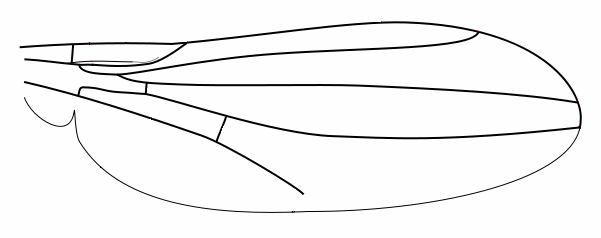 |
| Figure 408. Leiomyza sp., wing. |
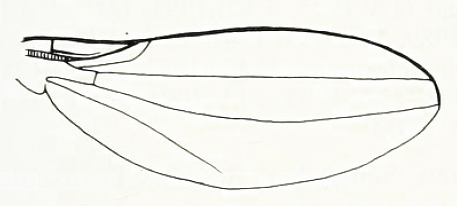 |
| Figure 436. Asteia amoena, wing (after Merz, 1996) |
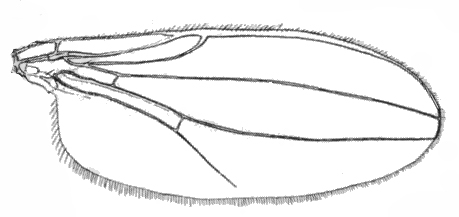 |
| Figure 439. Astiosoma rufifrons, wing (after Chandler, 1978) |
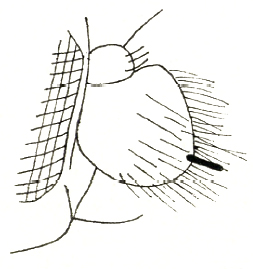 |
| Figure 440. Anarista endroedyi, antenna (after Papp, 1972) |
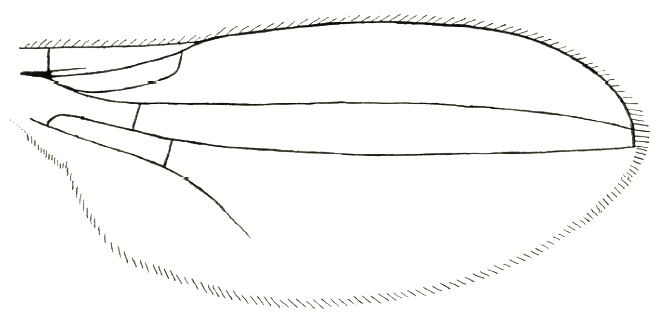 |
| Figure 441. Anarista endroedyi, wing (after Papp, 1972) |
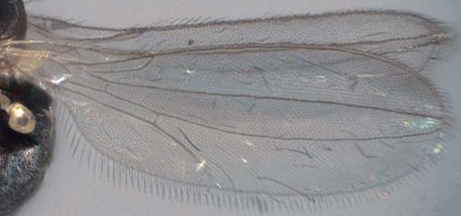 |
| Figure 442. Polyarista albistoma, wing (after Papp, 2013) |
 |
| Figure 443. Polyarista albistoma, head (after Papp, 2013) |
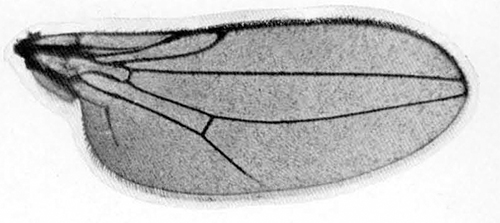 |
| Figure 444. Phlebosotera mollis, wing (after Duda, 1934) |
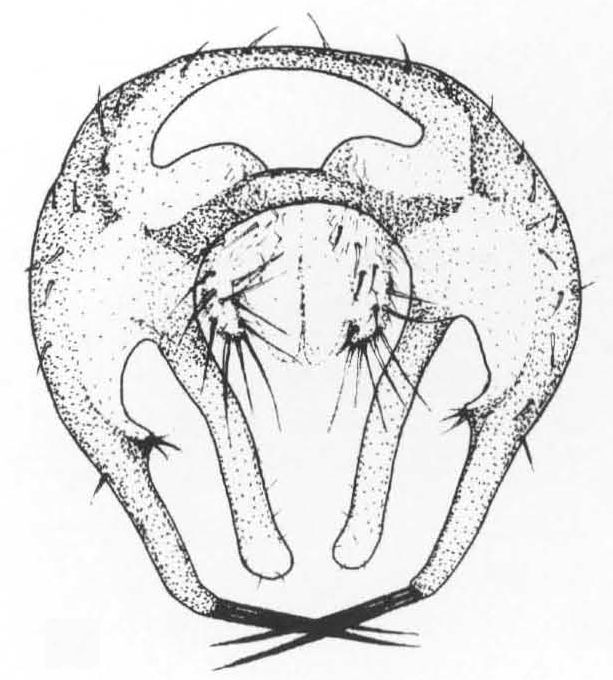 |
| Figure 445. Leiomyza birkheadi, genitalia in dorsal view (after Gibbs & Papp, 2007) |
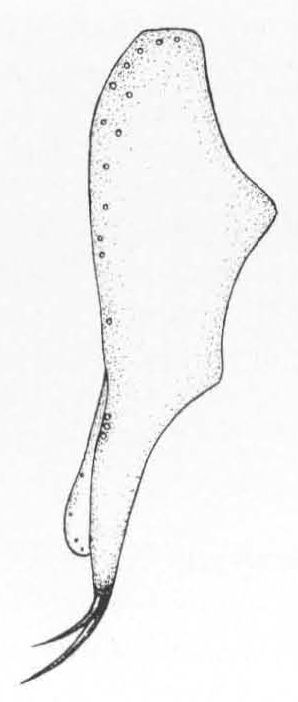 |
| Figure 446. Leiomyza birkheadi, genitalia in lateral view (after Gibbs & Papp, 2007) |
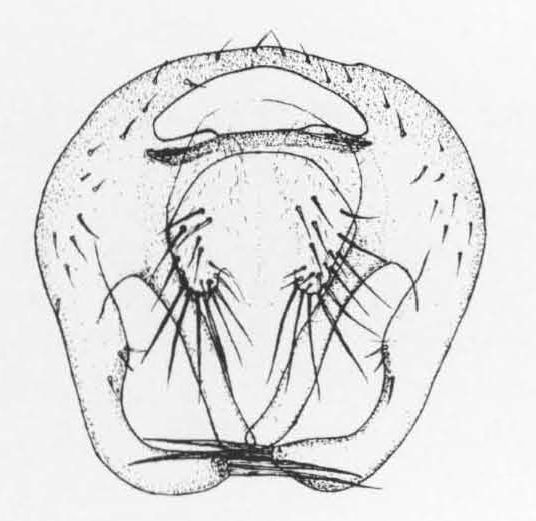 |
| Figure 447. Leiomyza laevigata, genitalia in dorsal view (after Gibbs & Papp, 2007) |
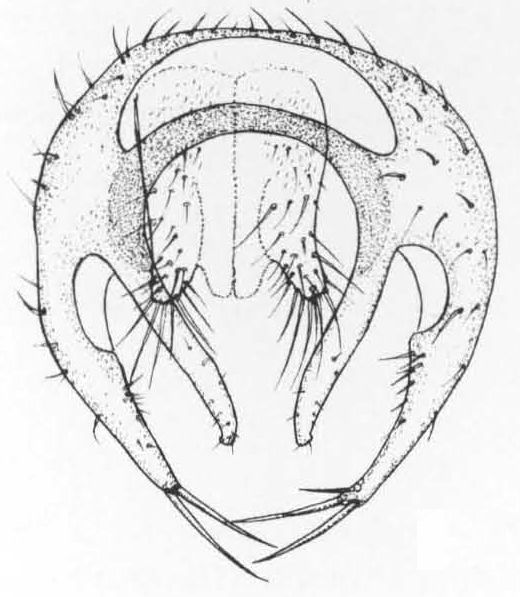 |
| Figure 448. Leiomyza wheeleri, genitalia in dorsal view (after Gibbs & Papp, 2007) |
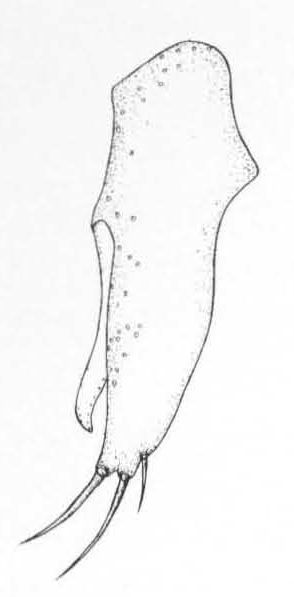 |
| Figure 449. Leiomyza wheeleri, genitalia in lateral view (after Gibbs & Papp, 2007) |
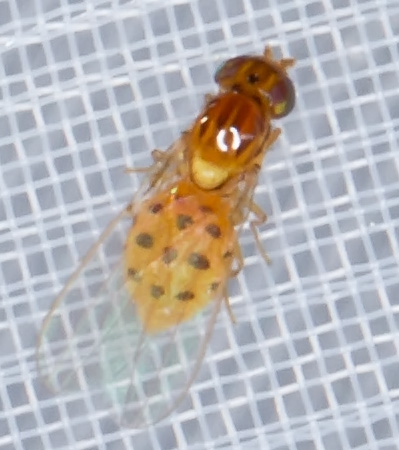 |
| Figure 450. Asteia elegantula, adult (photo: Geir Drange) |
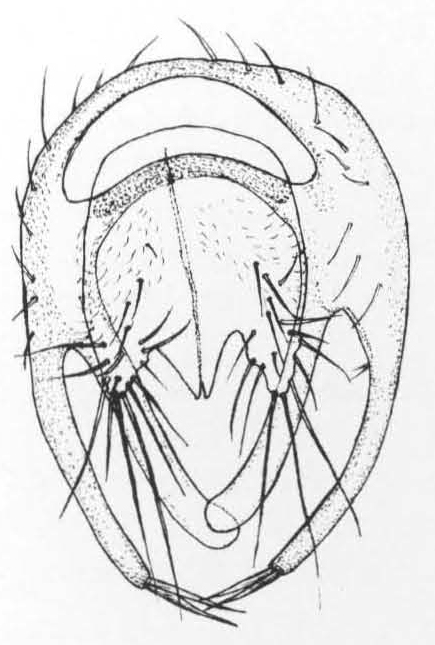 |
| Figure 451. Leiomyza scathophagina, genitalia in dorsal view (after Gibbs & Papp, 2007) |
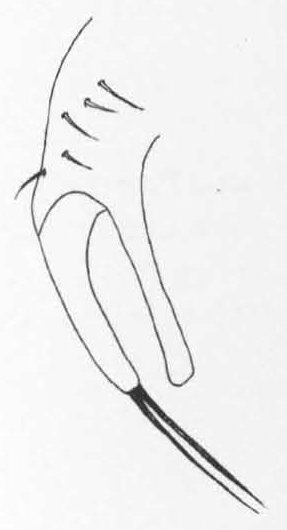 |
| Figure 452. Leiomyza kaszabi, surstylus and epandrial process in dorsal view (after Gibbs & Papp, 2007) |
 |
| Figure 453. Leiomyza dudai, surstylus and epanandrial process in dorsal view (after Gibbs & Papp, 2007) |
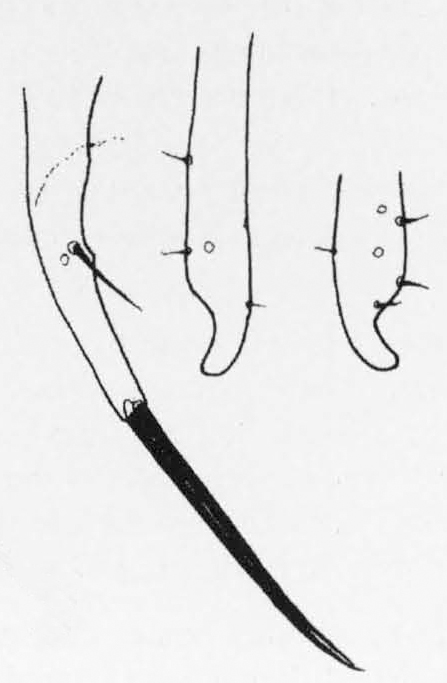 |
| Figure 454. Leiomyza chinensis, surstylus and epanandrial process in dorsal view (after Gibbs & Papp, 2007) |
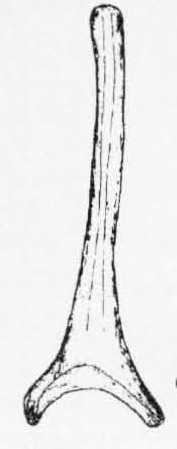 |
| Figure 455. Leiomyza dudai, ejactulatory apodeme (after Gibbs & Papp, 2007) |
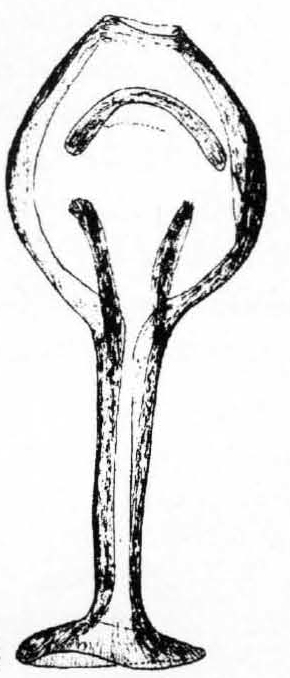 |
| Figure 456. Leiomyza chinensis, ejaculatory apodeme (after Gibbs & Papp, 2007) |
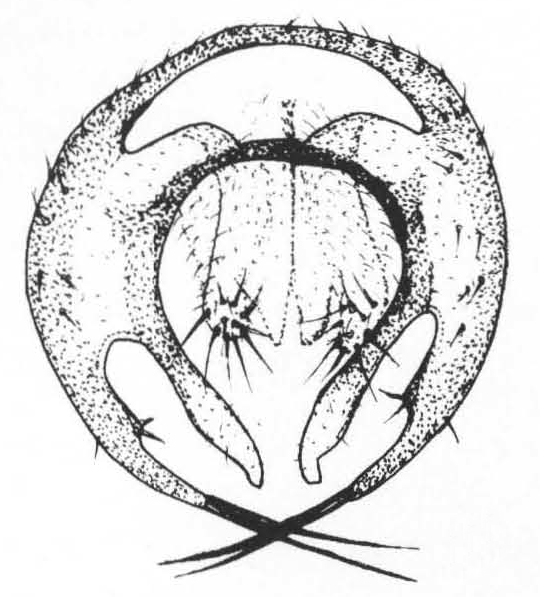 |
| Figure 457. Leiomyza dudai, genitalia in dorsal view (after Gibbs & Papp, 2007) |
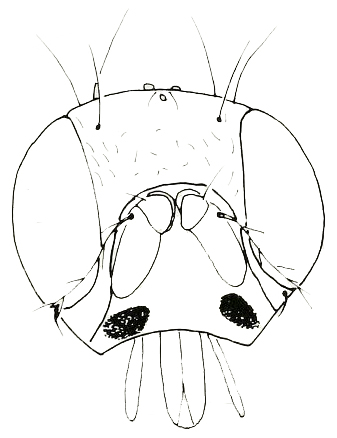 |
| Figure 458. Asteia concinna, head in anterior view (after Merz, 1996) |
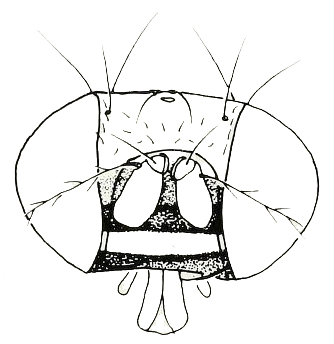 |
| Figure 459. Asteia amoena, head in anterior view (after Merz, 1996) |
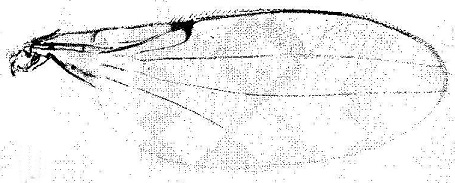 |
| Figure 815. Asteia caesia, wing. |
 |
| Figure 816. Asteia inanis, wing. |



















































